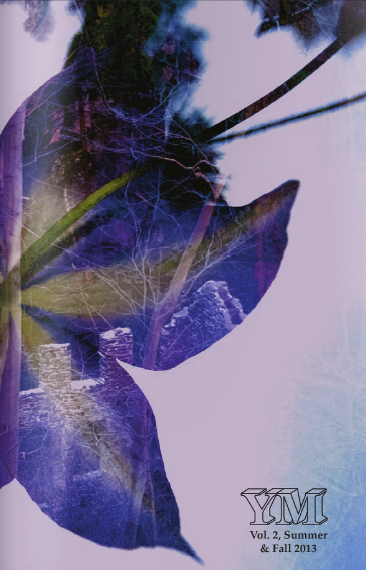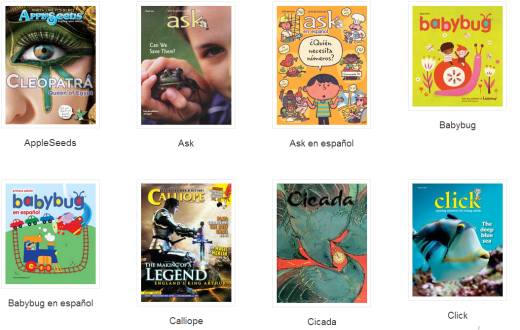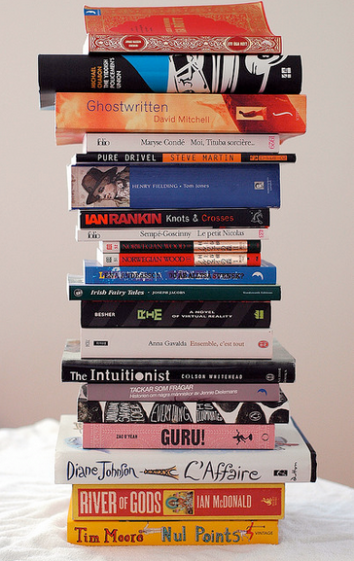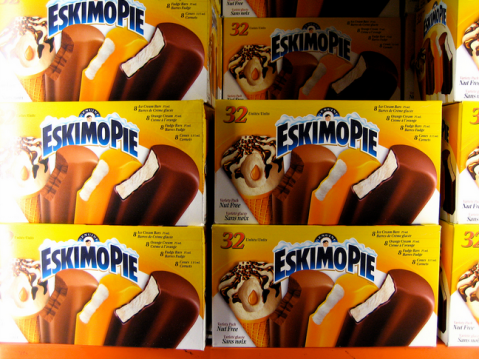Blog Archives
Regarding Poetry – Part 4: It’s Time to Talk Literature, Ya’ll
by Sam Levenberg, Staff Writer
Hi again!
Sadly, my knowledge about literary magazines is very limited. While I have a few that I can definitely say I enjoy more than others, whether or not they are credited as being “good” almost always eludes me. So, I did a little Google search about the top ranked magazines and found this little article on www.everywritersresource.com, titled “Top 50 Literary Magazines.” Pretty convenient, no?
Anywho, I tell you a little about the top five magazines they listed. (A little side note: I excluded the number 2 ranked mag because it is a college publication, and I want to tell you about the commercial ones instead)
- The New Yorker – This is the most well-known literary magazine out there. I mean, if you haven’t heard of The New Yorker, you have to have been living in a cave since the 1920s. From its trademark comics (the caption on the one posted is “Makes you proud to be an American, doesn’t it?”) to the articles on everything from art to politics, to its in-depth literary reviews, I don’t think I need to say much more about this one.
- The Atlantic – As with The New Yorker, this is one magazine that is very well established. While it lacks as many defining characteristics as The New Yorker, The Atlantic makes up for it by having a highly diverse article base that makes it transcend being a simple literary magazine, and has made it a valuable critical source.
- Harper’s Magazine – Coming directly from their website’s “About” section: “Harper’s Magazine, the oldest general-interest monthly in America, explores the issues that drive our national conversation, through long-form narrative journalism and essays, and such celebrated features as the iconic Harper’s Index. With its emphasis on fine writing and original thought Harper’s provides readers with a unique perspective on politics, society, the environment, and culture.” I wish I could say it better, but I can’t. Take a look-see through their website and archives, and you’ll understand why.
- Tin House – Compared to the other magazines on this list, Tin House is a baby, barely a toddler. Having been founded in 1999 it is just over a decade old, but has proven that even though it is small, it is formidable. If you are looking for good art coupled with interesting articles about the state of the world, take a look at some of the older magazines. If you are looking for good art plain and simple pick up a copy of Tin House.
- The Paris Review – Despite being ranked sixth on the list provided by Every Writer’s Resource, it should be noted that The Paris Review is the only mag on this list which is from overseas. The other four are all based out of somewhere on the continental United States. That in and of itself should be enough to show how good of a magazine it is. But it’s when you take a look inside an edition of The Paris Review that you truly understand how significant this is. From its wide range of poetry, to its beautifully written literary reviews, to its presentation of only the best established and up-and-coming writers in the business, The Paris Review doesn’t need to prove that it is one of the best—it simply is.
So that’s everything. If you have some spare time, you should pick up a copy of any of these magazines. Not only will it (hopefully) brighten up your day, but it will most likely expand your mind.
With more affection than I may seem to be showing,
Sam Levenberg
Yorick Magazine
P.S. – If you want to take a look at the full list of “Top 50 Literary Magazines” here is the link: http://www.everywritersresource.com/topliterarymagazines.html
Regarding Poetry: Part 2 – Getting your Poetry Out into the Wide, Wide, Gloriously Wide World
By Sam Levenberg, Staff Writer
Hello again out there!
First of all, thanks to everyone who submitted to the Summer 2013 issue of Yorick! Alex and Lauren sent responses to all who submitted, so check your emails if you sent in work. Expect the full issue to be produced by mid-August. Contributors’ copies will be sent out in the coming months.
So in the past I’ve talked about my favorite literary magazines and the pleasure I find in my own and others’ poetry. What ties magazine love and poetry love together, though, is that both exist because people write poetry (including, I hope, some of you!). So, anticipating that someday I’ll read in some literary magazine a cornucopia of good poetry that brings me delight—some such that will be written by you, members of the blogosphere—I have three suggestions on going about submitting and possibly having your poetry accepted.
1) Know what kind of poetry you write. I think this is the most important part of submitting your poetry, because every magazine is looking for something different. If you write humorous, nonsensical poems and submit them to a magazine that’s looking for deep, emotionally heart-wrenching poems, you’re going to get rejected. So know what kind of poetry you write, and then try to find magazines that publish those kinds of poems. It’ll greatly enhance your chances of getting them published.
2) If what you’re looking at is a smaller, less well known magazine—like 32 Poems, vox poetica, or Circus Book—then your best bet is to go online and find out when their deadlines are and then directly email the editor. Many times these editors don’t get a whole truckload of submissions, at least compared to bigger magazines like Paris Review, so hearing from someone who is looking to get their poetry out and about is a joy for them. I’ve had two or three email conversations with editors of small magazines, and one thing they always mention is that they love hearing from new poets and reading their poems; they never know what to expect and are often amazed by what they read. So, in short, take initiative and don’t be scared to email an editor.
3) Compared to smaller literary magazines, hulking magazines like the Paris Review and The New Yorker receive thousands of submissions by their respective deadlines. So, emailing an editor of a magazine like that is impractical because it’s unlikely they’ll get back to you. However, there are online databases for writers that can greatly help you in your submissions to these magazines. One of the most well known is called Duotrope, which not only lists a large number of magazines both big and small, but also provides statistics on how likely it is that anything you submit will be accepted and how long it can take for different magazines to respond to your submission. For up-and-coming writers, as well as those who are more experienced, websites like Duotrope can be a great help for finding the magazine that’s right for you. In sum, utilize online resources to their fullest extent.
That’s all I have for now. Hopefully what I’ve give is useful to those of you who are looking to expand your poetry throughout the wide, wide world.
So long, and thanks for all the fish,
Sam Levenberg
Yorick Magazine
Best Summer Reads
By Sam Levenberg, Staff Writer
Hello again!
So, I walked into my kitchen earlier and saw, sitting in a little bowl on the counter, the first summer tomatoes from my dad’s garden. As I sat down to enjoy a few lightly salted tomato slices (you should try it—it’s surprisingly delicious), I remembered some of the other small things that make summer simply delightful: eating dinner on the porch, lounging by the pool, playing summer nighttime games like capture the flag or manhunt, and, most especially, taking the time to sit down and read a good book.
Being an English major, I am required to read a lot of books, some of which are enjoyable, some of which are not. Often the books I read for school are not the ones I would pick up in my spare time. Ever since I was a little kid, I have enjoyed reading good adventure stories because they are always amazingly fun to read and can usually be finished in a day or two. As I have gotten older, the stories shifted from young adult to mature fiction, but my love for adventure stories has not diminished. So without further ado, here are some of the books, authors, and stories I have been reading this summer.
Fables: This is not technically a series of book-books, but a series of graphic novels. The story lines they contain are so intricate and wonderfully original that I have literally spent hours reading and re-reading the series. In short, magical creatures called Fables, kicked out of their own world, end up in moving into ours. The series is about their struggles to live among humans, or “Mundies” as they call us, while still keeping their own lives in check. If you’re interested in a new spin on storybook characters such as Snow White, Prince Charming, The Big Bad Wolf, Cinderella, Jack (from “Jack and the Beanstalk” fame) and others, then this is a must read.
Amberville: This one is definitely interesting. Set in a world exactly like ours, except populated by anthropomorphic stuffed animals, Amberville is a gritty, dark mystery novel that does not disappoint. While the mystery itself was not all that spectacular, the characters in the story are what sold it for me. If you’re interested in reading something wayyy out of the ordinary, then this is definitely for you.
Percy Jackson: When I say Percy Jackson, I mean the whole series, not just the first book (read the book, DON’T see the movie—the book is way better), because it features a genre and a story arc that are personally right up my alley. Having had to read canonical literature for most of the last eight months has been grueling, so picking up this series and reading it cover to cover in two weeks was a nice break. As well, being a fan of mythology, I was pleased to see how Rick Riordan incorporated almost every Greek myth and story into his books in various ways. These are nice and easy reads, but they’re still fun and engaging all the while.
Roald Dahl: This man is my favorite writer by far. Many of you have probably read Charlie and the Chocolate Factory and Matilda as well as a number of his other children’s stories. Yet, what I love most about his writing is his short stories. While mostly dark and humorous, all of them are simply amazing to read. Consequently, his stories cover a lot of the darker topics his more popular fiction does not, and yes, there are quite a few—murder, art, sex and humanity’s insanity are some of the more common ones, but this topic list has an extensive range. If you get a chance, I strongly suggest you pick up a copy of The Best of Roald Dahl. My personal three favorites are “Lamb to the Slaughter,” “Skin,” and “Pig,” but if you do read his stories, let me know which ones you liked. I can talk about his works for hours upon hours upon hours.
That’s it for now. I wish you all a happy day, and happy night, and a happy everything. Feel free to contact me with any of your good summer reads, as I am running out of books to read and could use some mighty suggestions.
With summer restlessness,
Sam Levenberg
Yorick Magazine
Regarding Poetry: Part 1 – Best Independent Magazines
by Sam Levenberg, Staff Writer
Hello out there!
While looking on the World Wide Web and in a bunch of bookstores (both big and small) for interesting literary magazines, I realized that it was a daunting task. Considering that Duotrope, a service for writers and magazines alike, hosts over four thousand magazines, anthologies, and contests of its own, I could only assume that there were thousands of different independent publications in existence, of which I needed to choose only a few.
I want to note the two precedents I set for myself to help narrow down this range to only a few publications. I didn’t pay much attention to undergraduate student-run magazines (especially those that only publish student work) or niche publications (e.g. a review of food poetry) because I wanted to consider those magazines with broader audiences and contributors as well as more diverse tastes.
And so, in no particular order, these are five literary magazines which I really liked and why I liked them:
- 32 Poems: I liked this magazine because of its premise – all their poetry is 32 lines or shorter. This singular restriction makes it so that you don’t get bogged down reading the journal. It was refreshing, to say the least, and I particularly loved the way that a lot of the authors creatively found ways to tell an entire story in such a short amount of lines.
- vox poetica: More than their actual publications, which I think I should probably have read a few more of, this magazine’s defining strength is in its website. In their mission statement, this publisher says they are interested in, “…art that pushes, or rather forcefully shoves, the boundaries.” and their website strives for this hand and foot. One of the favorite sections on their site is the “Prompts” page, where the editors post some form of prompt and ask viewers to write a poem based off it. It was a definitely a treat reading what people came up with.
- Eskimo Pie: Ohhhh kay, the first thing I liked about this magazine, before I even got into its pages, was its name. I mean, I personally love Eskimo Pies as much as I love Mallomars, so the name itself made me think of those. With a focus on all kinds of poetry, but with an abundance of haikus, this magazine was definitely and interesting read. The haikus especially made me happy for the same reason that 32 Poems’ works made me happy – it was interesting to see what people did with such a small amount of space.
- The 22 Magazine: The greatest thing about this magazine is that every edition has exactly 22 authors, no more no less. That’s what I loved about it. By confining themselves to such a specific number of authors this publication gives great focus on the work of said authors. Some of the pieces are really lighthearted and fun, some are dark and reflective, and some are indescribable. But all of it is unique, and all of it was enjoyable to read.
- Circus Book: This one I have to say I am a little more biased about because I did some work for them a little while back, so I got to know the editors and what the kind of work they put out. What I ended up liking so much about the Circus Book was that I could spend hours reading and looking through the archives on their website because they have works of fiction, non-fiction, all kinds of poetry and a plethora (yes, plethora) of artwork, almost all of which is interesting.
Please, dear readers, keep in mind that this is my opinion and is therefore heavily biased. If you know of other magazines that you feel are better than the ones I listed, feel free to tell me about them so I can check them out, because there is a very good chance they are better than the ones I listed.
With great amounts of fondness,
Sam Levenberg
Yorick Magazine
The Pleasure in Poetry
by Samuel Levenberg, Staff Writer

Poetry, by V.H. Hammer. View her work at http://www.flickr.com/photos/vhhammer/
Heidi ho out there!
A few days ago my editor – the esteemed Alex Grover – asked me if I wanted to write a blog post for Yorick about what I like about poetry. A few things immediately popped into my head – how its beauty is only in words and how it can be about much of anything – but what I think I like most about poetry is its unpredictable nature. When looking into poetry, whether in a literary magazine, a textbook, on the internet, my own drunk scribbles or even just research about it in general, the gems I find concerning poetry always lift my mood.
Two gems in particular always make me smile when I see them. The first is a drunken scrawl I wrote about a month ago when I was having a conversation with a random girl I had just met. I mentioned I was a poet, so she challenged me to write a poem. I asked her for a word and she said to me “CRY.” I said “Okay,” and I wrote this for her:
Cold fusion does make
radioactive music.
YES, said the hero
I almost forgot this poem, because I’d written it on a napkin and given it to her so I thought I had lost it. But about two days after this night, I was taking a look at my jeans and saw something written on them. Wadda ya know, it was this poem, and when I saw that I couldn’t help but grin.
The other gem that always makes me smile is that there are 190, 899, 322 different ways to write a sonnet (thank you John Lennard’s The Poetry Handbook!) because for a while I was of the opinion that you could only write a sonnet one of two or three ways – in English, Italian or Spenserian forms. However, after reading these numbers in Lennard’s book and doing a close reading of “Ozymandias” by Shelley, my mind was opened to the adventures that writing sonnets can hold. So, whenever I look at this number I am reminded of this, and it makes me smile.
So, farewell. I wish you hope out there in the blogosphere in finding your own gems to smile at.
Best,
Sam “The Grimm” Levenberg
Intern (in turn)
Yorick Magazine






